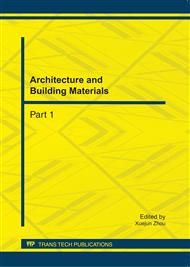[1]
C M Dry. Smart earthquake resistant materials using time released adhesives for damping,stiffening,and deflection control. Proceedings of SPIE.1996.2779:958-967.
DOI: 10.1117/12.237085
Google Scholar
[2]
C M Dry. Improvement in reinforcing bond strength in reinforced concrete with self repairing chemical adhesives. Proceedings of SPIE.1997.3043:44-50.
DOI: 10.1117/12.274653
Google Scholar
[3]
C M Dry. Preserving performance of concrete members under seismic loading conditions. Proceedings of SPIE.1998.3325:74-80
Google Scholar
[4]
Jonkers, H. M.. Self Healing Concrete: A Biological Approach[M]. S. van der Zwaag (eds.), Self Healing Materials, An Alternative Approach to 20 Centuries of Materials Science, Springer series in materials science 100, Springer Netherlands, 2007, 195–204.
DOI: 10.1007/978-1-4020-6250-6_9
Google Scholar
[5]
Jonkers, H. M., Schlangen, E.. Crack Repair by Concrete-Immobilized Bacteria[C]. In: AJM Schmets & S van der Zwaag (Eds.), Proceedings of the First International Conference on Self Healing Materials, Noordwijk (The Netherlands): Amsterdam, Springer, 2007.
Google Scholar
[6]
Nishiwaki T, Mihashi H, Jang BK, et, al. Development of Self-healing System for Concrete with Selective Healing around Crack[J]. Journal of Advanced Concrete Technology, 2006, 4(2): 267–275.
DOI: 10.3151/jact.4.267
Google Scholar
[7]
Yuan Xiong Zhou, Sun Wei, Zuo Xiao Bao, Li Hua. Effect of heat-melt ethylene-vinyl acetate on crack self-healing properties of cement-based material[J]. Journal of the Chinese Ceramic Society,2010, 38(11):2185-2192.
Google Scholar
[8]
Yuan Xiong Zhou, Sun Wei, Zuo Xiao Bao, Li Hua. Experimental Research on the Crack Self-healing Properties of Motar with EVA Heat-melt Adhesive. In: Wolfgang Brameshuber (eds.), Proceedings of the International RILEM Conference on Material science(MatSci), (held on September 6-10, 2010, Aachen, Germany), Aachen: RILEM Publications S.A.R.L., Volume Ⅲ, 2010, 433-442 .
Google Scholar


